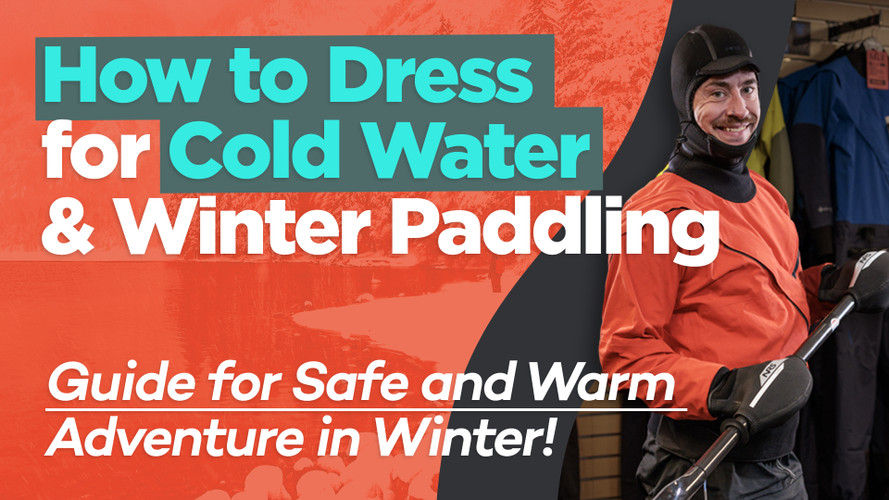The Guide to Winter Paddling Dressing
Posted by Pascal Smyth on 2023 Dec 5th
Summer is inarguably the most popular season for paddle sports, and with good reason! Temperatures are high, days are long, and the weather is generally relatively much more mild. But with greater popularity and accessibility comes increased use, a harder time finding parking, and an overall much busier experience.
Thankfully, for those of us looking for something a little quieter there's the shoulder season and winter. With the right gear and a safety-conscious mindset paddling during the colder months can be a delight.
Understanding the Risks: Hypothermia and Cold Shock
Going out paddling in colder weather isn't just about bundling up against the cold air, but much more critically being dressed to be safe in the event of immersion.
The first risk is that of cold shock, a reflexive response when suddenly immersed in cold water. It commonly manifests as rapid and uncontrolled gasping. Not an ideal situation to be dealing with when in the water.
The other major risk is that of hypothermia, where the body temperature drops faster than it can be regained. A victim of hypothermia will initially lose blood flow and function of their limbs, which first presents as a loss of dexterity in the hands and fingers. Again, not an ideal situation when dealing with an out-of-boat experience.
Thankfully these risks can be reduced through proper layering.
Dressing for the Occasion: Layering is Key
The key to being comfortable when on the water is proper layers.
- 1. Base Layer: Merino wool is excellent for its warmth and comfort. It wicks moisture away, keeping you dry and warm. Other alternatives include synthetic layers, such as polyester or polypropylene. My preference is merino wool, as it is naturally antibacterial and thus keeps smelling fresh on multi-day trips.
- 2. Insulation Layer: A mid-layer of fleece or other similarly lofty layers. The thickness of these layers traps warm air, keeping the chill of the air and water at bay.
- 3. Outer Layer: A dry suit is essential for winter paddling. It prevents water from soaking your inner layers, keeping you warm even when wet. It also helps shield you from wind, helping to prevent a chill on windy days.
- 4. Footwear: Opt for thicker neoprene boots both to keep you warm and to prevent damage to the drysuit socks. A taller boot that covers the ankles will provide much more warmth than a shorter cut.
- 5. Gloves and Pogies: Pogies offer fantastic warmth and allow you to grip the paddle as usual. They don't provide any insulation when you take your hands out of them, so if you are in especially cold environments, consider wearing a pair of thin neoprene gloves as well.

The Essential Gear: Beyond Clothing
While clothing is vital, additional gear is just as important for a safe paddling experience:
- 1. PFD (Personal Flotation Device): A properly fitted PFD is crucial for safety. Treading water to stay afloat in cold water will chill you very quickly.
- 2. Communication Devices: Carry a VHF radio, a cell phone in a waterproof case, or a satellite communicator/EPIRB.
- 3. Snacks and Hot Beverages: High-calorie snacks and a thermos filled with a hot beverage can provide essential warmth and energy.
- 4. Extra layers: For instances where I plan on spending lots of time in the water, I opt for a few more layers and don an NRS Storm Hood for extra protection against ice cream headaches.
Conclusion: Balancing Fun and Safety
Paddling in the winter is not all doom and gloom. With the right gear and precautions, it can be an incredibly enjoyable and unique experience. Remember, the key is to strike a balance between comfort and safety. Always prioritize safety and be mindful of the conditions.

